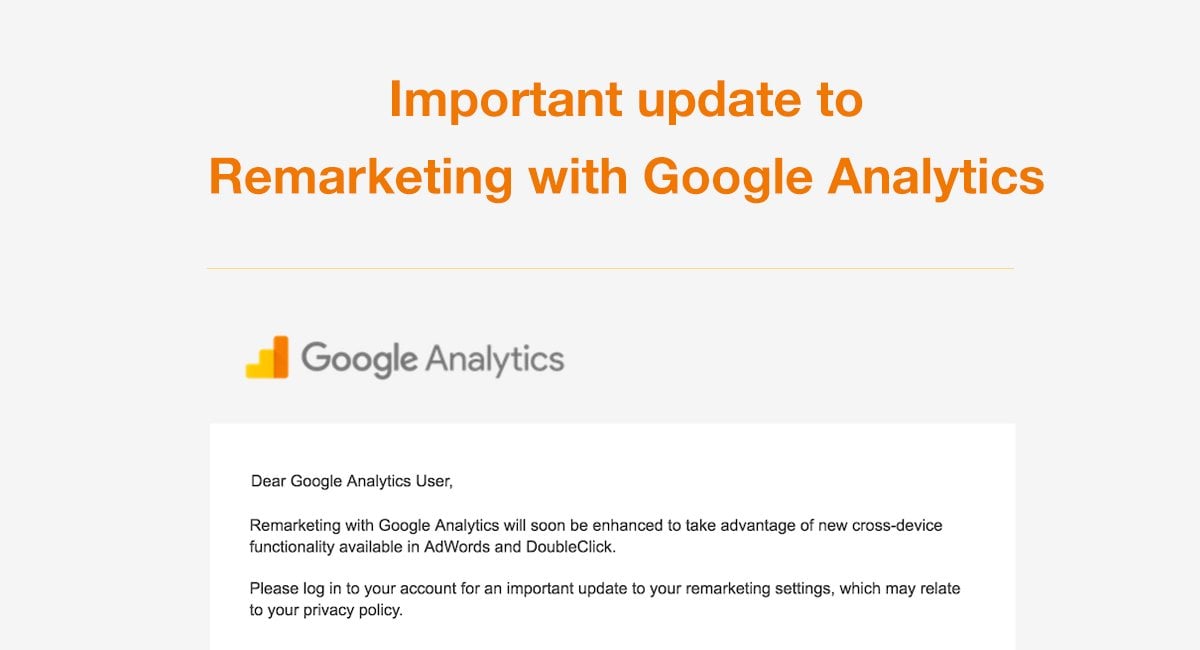Taking Advantage Of Remarketing in Google Analytics: A Comprehensive Guide
Utilizing remarketing in Google Analytics offers companies a strategic side in getting to out to prospective customers. This overview will certainly drop light on the important steps entailed in utilizing the full possibility of remarketing in Google Analytics, leading to improved advertising outcomes.
Comprehending Remarketing in Google Analytics
Remarketing in Google Analytics enables businesses to tactically target individuals that have actually formerly interacted with their internet site or mobile app. By leveraging information from Google Analytics, services can develop personalized remarketing lists based upon customer habits, such as web pages checked out, actions taken, or certain goals attained. This effective tool allows companies to re-engage with customers who have actually shown interest in their solutions or products, inevitably raising the probability of conversion.
Understanding the different kinds of remarketing strategies is critical for a successful campaign - What Is “Remarketing” In Google Analytics?. Google Analytics supplies different alternatives, including typical remarketing, dynamic remarketing, and remarketing checklists for search advertisements (RLSA) Each type offers an unique function and can be customized to satisfy specific advertising objectives
Moreover, analyzing the performance of remarketing campaigns is necessary for maximizing results. Google Analytics offers valuable insights into the effectiveness of various remarketing methods, permitting companies to make data-driven decisions and improve their targeting approach. By constantly keeping track of and changing remarketing initiatives based upon analytics information, services can make the most of ROI and drive success in their advertising efforts.
Establishing Up Remarketing Projects

After setting up target market checklists, the next step is to connect Google Analytics with Google Advertisements. By linking these two systems, services can perfectly transfer target market listings from Google Analytics to Google Ads for remarketing objectives. This assimilation enables more specific targeting and much better campaign efficiency.
Once the accounts are connected, services can produce remarketing projects in Google Advertisements using the target market notes formerly defined in Google Analytics. These projects can be tailored with particular advertisement creatives, messaging, and bidding strategies to successfully re-engage with past site visitors and drive conversions. By following these actions, companies can utilize the power of remarketing to improve their advertising and marketing efforts and raise ROI.
Using Target Market Segmentation Methods

Predefined sections in Google Analytics permit you to quickly examine usual target market classifications like see here brand-new users, returning users, or users who completed a details objective on your website. Custom-made sectors, on the various other hand, enable you to create distinct sections based upon certain standards that are important to your company goals. Dynamic remarketing listings instantly readjust based upon customer actions, revealing personalized ads to individuals who have engaged with your website in certain means.
Studying Remarketing Performance Metrics
Upon assessing the efficiency of remarketing campaigns in Google Analytics, the analysis of crucial performance metrics supplies valuable understandings into target market involvement and conversion prices. By delving into metrics such as click-through prices (CTR), conversion prices, cost per purchase (CERTIFIED PUBLIC ACCOUNTANT), and return on advertisement spend (ROAS), marketing experts can assess the success of their remarketing initiatives. Evaluating these metrics makes it possible for online marketers to maximize campaigns, fine-tune target market targeting, and assign spending plans efficiently to improve total remarketing performance.
Enhancing Remarketing Methods
When refining remarketing approaches in Google Analytics, concentrating on target market division is paramount for accomplishing project success. By separating your audience into particular sections based upon their actions, demographics, or interests, you can tailor your ads a lot more effectively to every team. This targeted approach boosts the chance of involving customers who have already shown interest in your solutions or products, leading to greater conversion prices.
One more essential aspect of optimizing remarketing approaches is constantly screening and refining your projects (What Is “Remarketing” In Google Analytics?). A/B screening various advertisement creatives, messaging, or offers can find out here now help you identify what resonates ideal with your target market and drives one of the most conversions. By examining the performance of these tests in Google Analytics, you can make data-driven decisions to optimize your remarketing initiatives better
Moreover, leveraging vibrant remarketing can substantially enhance your campaign results. This feature allows you to show individualized advertisements to individuals based on their past communications with your internet site, showcasing items or solutions they have formerly watched. By supplying customized content to users based upon their rate of interests and actions, dynamic remarketing can aid increase involvement and drive conversions.
Verdict
To conclude, taking advantage of remarketing in Google Analytics is a critical technique to target users that have previously engaged with an internet site. By producing customized target market lists and making use of audience division methods, companies can enhance remarketing advocate raised conversion prices. Assessing performance metrics and continually maximizing methods are crucial for optimizing the efficiency of remarketing efforts.
Google Analytics offers numerous alternatives, consisting of conventional remarketing, dynamic remarketing, and remarketing listings for search advertisements (RLSA)After setting up target market listings, the following action is to link Google Analytics with Google Ads. By linking these 2 platforms, organizations can effortlessly transfer audience listings from Google Analytics to Google Advertisements for remarketing functions.When the accounts are connected, services can produce remarketing projects in Google Ads using the audience provides formerly specified in Google Analytics.When refining remarketing techniques in Google Analytics, focusing on audience segmentation is paramount for accomplishing project success.